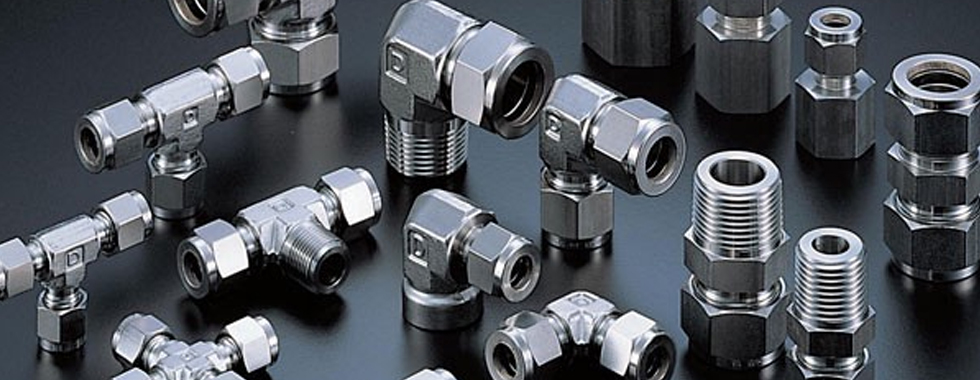Types of Instrumentation Fittings

Metallum Overseas offers a variety of instrumentation fittings for use in transportation, oil and gas, and other process control applications. offering a full selection of tube fittings connection types, including cone and thread technology, single and double ferrule tube fitting, and vacuum to 150,000 PSI.
Double ferrule fittings of the sort used in general compression tubes offer leak-proof, torque-free sealing at the tubing connection. They offer security and stop potentially dangerous fluid leaks in the instrumentation area for process, pressure, hydraulic, and other relevant tubing systems.
3 Main Kinds of Instrumentation Fittings are:
Fittings for Compression: Compression fittings are the best-organized and most practical fittings to utilise. There are several grips on the tube in this design. By coining (compressing), the ferrule fastens itself to the tube's surface. When it comes to vibration resistance, all fittings outperform compression fittings, not just over-butt weld fittings. No tools are required for this type of fitting. With care, insert the tubes into the stop relation, then tightly squeeze it by giving it a boxing twist to get the appropriate torque. Compression fittings are typically the convention with the lowest overall value because of how simple they are to use.
Fittings For Threaded and Cone: Cone and thread connectors are most typically employed at pressures up to 15,000 PSI, while they are sometimes used in high-pressure installations. Since the tube has a firm edge and is screw less, the attachment between the tubes and fitting is tight and secure. After the tubing sides have been properly made with a perfectly smooth shine, the tubing must be joined securely against the junction in order to create a tight seal. The assembling time and expense of C&T fittings are greatly increased because everything is frequently finished on the job. For maintenance, C&T fittings can be disassembled and rebuilt just like compression fitting.
Fittings for Butt Welding: A butt weld fitting is the convention that provides the highest level of oscillation safety. The utmost tolerance for noise and wear is found in a properly formed butt weld because the metals are securely bonded together. However, the butt weld fitting attachment has significant drawbacks, such expense. The most price of the three primary kinds of instrumentation fitting parts is a butt weld connection since it requires more welding equipment, a trained welder, and more labour hours.
We provide these tube fittings in a wide range of dimensional requirements, which may then be further tailored to meet the needs of clients. We offer instrumentation tube fittings for tubing connections that are leak-proof and torque-free.
Below are few popular types of Instrumentation Fittings:
Single Ferrule Fittings, Double Ferrule Fittings, Thread and Cone Fittngs, Front Ferrule, Back Ferrule, Coupling Cap (Nuts), Fitting End Closure, Reducing Union, Bulkhead Reducing Union, Tube End Closure, Union, Bulkhead Union, Union Elbow, Bulkhead Elbow, Union Tee, Union Cross, O Seal Male Connector, 45 Deg. Male Elbow, Positionable Male Elbow, Positionable Male Run Tee, Female Connector, Bulkhead Female Connector, Female Branch Tee, O Seal Male Adapter, Bulkhead Male Connector, Female Elbow, Male Connector, Male Elbow, 45 Deg Positionable Male Elbow, Male Run Tee, Positionable Branch Tee, Female Manometer Connector, Female Run Tee, Male Adapter, Reducing Union Tee, Male Branch Tee, Pneumatic Fittings with a Push-To-Connect System etc.
These ferrule fittings comes in various materials and grades such as Inconel, Incoloy, Monel, Nickel, Hastelloy, Stainless Steel, Duplex Steel, Super Duplex Steel, Alloy 20, Titanium etc.
